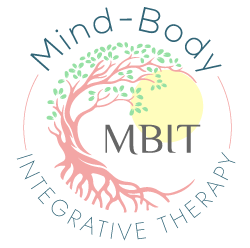As a lifelong student, the content in this blog consists of my reflections on the work of trauma expert Bessel Van Der Kolk, MD mixed with my professional observations and perspective.
“Bottom-up Regulation”—a term coined by doctor Van Der Kolk—refers to a way of self-regulation that begins with the body. In 1872, Darwin mentioned a nerve that connects the body with the brain; we now know this nerve to be “the vagus nerve.” This nerve runs down the midline of the body, and it in a way is thought to “carry our emotions,” transferring them through the body often in the form of “heartache” or “gut wrench” when something traumatic has occurred. In the age of COVID-19, we have ALL experienced something traumatic—we have all been faced with the loss of our sense of control over our present moment and plans.
How people manage these uncomfortable sensations varies, but it could be one reason why there is so much stock in liquor stores, fad diets, pornography, and pharmaceutical companies. Often the attempts to numb or improve the uncomfortable sensations that are a byproduct of the vagus nerve communicating a disruption in our brain-body health result in people looking outwardly for a solution versus inwardly to the root.
Research shows that 80 percent of the vagus nerve fibers run from the body to the brain; this means that by engaging the body you can change the brain. Where does one begin? Curiosity: become curious of yourself! Become curious about what you feel in your body. Be curious about your thoughts, your imagination, and your ability to dream for the future. Notice what feels good to your body and what helps you calm. Try something new: yoga from your living room, guided meditation before bed, and noticing how you’re holding your body at any given point of the day. Being curious about yourself is where you start. This curiosity engages us in a process called “mindfulness.” Mindfulness is well-researched and is known to grow the prefrontal cortex portion of the brain that is responsible for emotional regulation, creativity, problem-solving, and self-soothing. The laws of neuroplasticity apply to this part of the brain, which in simple terms means the more you exercise this part of your brain, the stronger it gets. The prefrontal cortex helps people learn to tolerate bodily sensations and, over time, decrease their intensity and discomfort.
Sometimes becoming curious about yourself feels scary. What might be found? What has been hidden, numbed out, or suppressed for all these years? Many people find it helpful to have a “guide”—someone to walk them through, hold their hand, and remind them they are not alone in this journey of self-discovery and healing.
Be well,
Sarah-Brooke Stiles, LCSW, PPSC.

